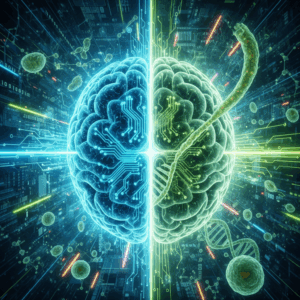Fundamentals of Biometric Security
Biometric security systems rely on unique physical or behavioral characteristics to verify identity. These traits include fingerprints, facial recognition, iris patterns, and voice signatures.
Unlike traditional methods, biometric traits are nearly impossible to duplicate or share, making authentication both reliable and convenient. This technology is essential for securing access to sensitive data and physical spaces.
Unique Physical and Behavioral Characteristics
Biometric security leverages features such as fingerprint ridges, facial geometry, iris textures, and voice patterns. These are inherently unique to each individual and difficult to forge or replicate.
Behavioral traits like typing rhythm or gait further enhance identification accuracy by adding dynamic elements, increasing the system’s robustness against fraud or theft.
Because these traits do not change significantly over time, they provide a stable basis for long-term identity verification, critical in high-security applications.
Advantages Over Traditional Authentication Methods
Biometric systems eliminate the need for passwords or physical keys, which can be lost, stolen, or forgotten. This reduces the risk of unauthorized access caused by credential compromise.
Authentication through unique biological traits provides faster, more seamless access, improving user experience without sacrificing security. This makes biometrics ideal for both physical and digital environments.
Additionally, biometric methods lower administrative costs by reducing password resets and minimizing the need for extensive security training or protocols.
Operation of Biometric Systems
Biometric systems operate by first capturing an individual’s unique physical or behavioral traits using specialized sensors. This process is fundamental for turning biological characteristics into usable digital data.
Once captured, the biometric data is processed and converted into a precise digital template, which is essential for comparing future scans and verifying identity efficiently and accurately.
Data Capture and Digital Template Creation
The initial step involves scanning biometric features, such as fingerprints or iris patterns, with sensors that generate raw digital images or signals. This data represents the individual’s unique traits.
Algorithms then extract distinctive features from these raw inputs to create a digital template. These templates are much smaller and more manageable than raw data but retain critical identifiers.
This template serves as a mathematical representation, allowing the system to quickly compare it with newly captured biometric data during authentication attempts, ensuring precision and speed.
Efficient template creation minimizes storage needs and supports fast matching processes, which is crucial for real-time access control in busy environments.
Data Storage and Encryption
After template creation, biometric data is stored securely in a database, often encrypted to protect against unauthorized access and tampering. Encryption ensures data confidentiality and integrity.
Many systems use advanced cryptographic methods to safeguard stored templates, making it extremely difficult for attackers to reverse-engineer or misuse biometric data.
Secure storage policies comply with privacy standards and regulations, helping maintain user trust and protecting personal biometric information from breaches.
Verification and Access Granting
When a user attempts access, their biometric features are scanned and converted into a digital template on the spot. This candidate template is then compared to the stored data for a match.
If the system finds a match within an acceptable threshold, it grants access almost instantly, balancing security with user convenience through rapid verification.
This process reduces the risk of unauthorized entry since biometric traits are extremely hard to replicate, making the system reliable for securing sensitive locations and information.
Applications in Modern Authentication
Biometric systems have become integral to modern authentication by enhancing security and simplifying user access processes. They complement traditional methods, offering a robust defense against unauthorized entry.
Integrating biometrics improves protection in both digital and physical realms, addressing evolving security threats while ensuring efficient, user-friendly authentication experiences.
Multi-Factor Authentication Integration
Biometrics serve as a powerful factor in multi-factor authentication (MFA), combining something you are with something you know, like a PIN, or something you have, such as an access card.
This layered approach significantly reduces the likelihood of breaches since attackers must compromise more than one authentication factor for successful access.
Biometric inclusion in MFA increases convenience by often allowing quicker access without sacrificing security, thus balancing user experience and protection.
Scalability Across Security Environments
Biometric systems scale efficiently from small offices to high-security government facilities, adapting to various operational and security needs through flexible deployment.
This scalability allows organizations to apply biometric security tailored to their risk profiles, ensuring consistent identity verification regardless of environment size.
By accommodating different requirements, biometric solutions provide sustainable and effective access control across diverse industries and settings.
Advanced Biometric Technologies
Advanced biometric technologies improve security by enhancing accuracy and resilience against deception. These systems leverage sophisticated sensors and algorithms to capture detailed biometric data.
Innovations like multispectral fingerprint sensors and iris recognition are pushing the limits, making authentication more reliable across varying environmental and lighting conditions.
Multispectral Fingerprint Sensors
Multispectral fingerprint sensors capture fingerprint data across multiple wavelengths of light, improving detection by penetrating skin layers. This ability enhances image quality even with dirty or damaged fingers.
By collecting subsurface details, these sensors reduce false rejections caused by superficial skin variations and increase resistance to spoofing methods like fake fingerprints made from silicone or gelatin.
The enhanced data collected allows for more accurate matching, ensuring robust performance in diverse conditions, such as wet or oily fingers where traditional sensors often struggle.
Iris Recognition and Anti-Spoofing Measures
Iris recognition technology analyzes the intricate patterns in the colored ring around the pupil, providing one of the most stable and unique biometric identifiers available.
Advanced systems incorporate anti-spoofing measures such as liveness detection, which verifies that the iris is from a living person rather than a photograph or artificial replica.
Techniques include detecting natural eye movements, pupil response to light, and 3D modeling, all designed to prevent fraudulent access attempts and enhance system reliability.







